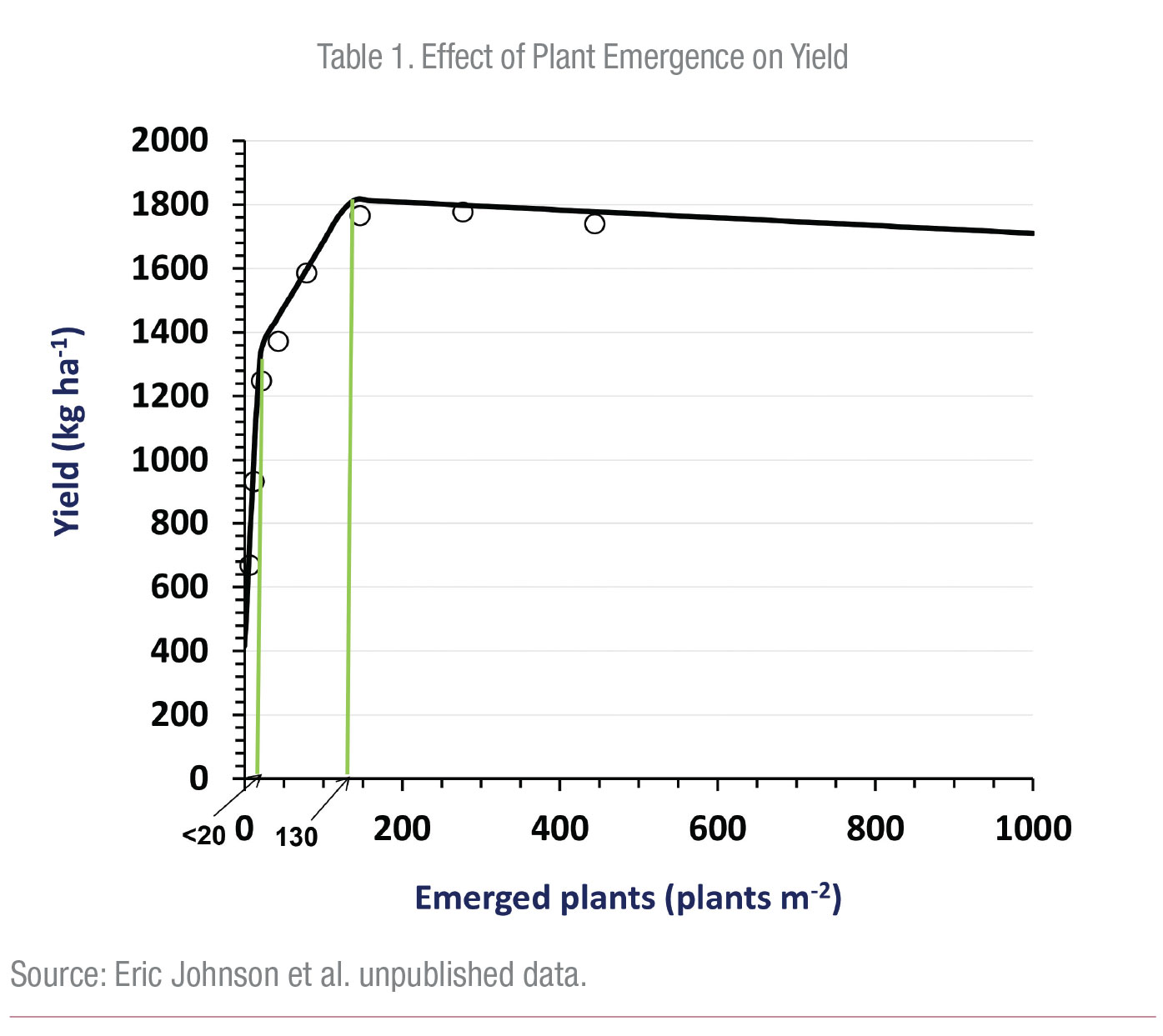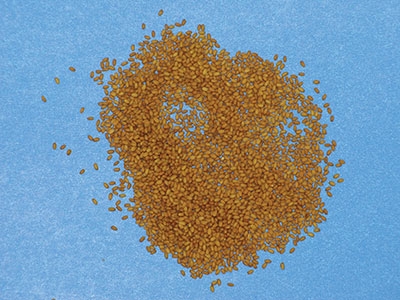
Features
Agronomy
Other Crops
Camelina agronomy 101
The market is still in development stages, but research is putting up the building blocks of agronomy should the market for camelina (Camelina sativa) grow. Eric Johnson, research scientist with Agriculture and Agri-Food Canada at Scott, Sask., has been researching camelina agronomy for several years, and has developed a better understanding of seeding dates and rates, weed control and fertility. Along the way, he has debunked a few myths as well.
“This was promoted as a crop that does not require nitrogen fertilizer, but what we found was that the response was very good and similar to other oilseed crops,” says Johnson. “So just follow the canola recommendations for nitrogen fertility for camelina production.”
Camelina has a maturity date similar to Polish-type canola in the 80- to 100-day range, and Johnson says it would be a good crop for short growing season areas, or for planting late. “We’ve seeded this on June 15 and had it mature with really good yields.”
The crop has some drought, heat and frost tolerance. It is resistant to flea beetles, blackleg and alternaria, so seed treatment is not required. With small seed and no seed treatment, low seed cost is an advantage.
Johnson has found stand establishment to be a challenge. The very small seed, about the size of alfalfa seed, has a 1,000-kernel weight of one gram. “We have, on average, 40 per cent establishment rate but in some cases it has been as low as 12 per cent.”
The minimum seeding rate is 300 seeds per square metre, and a minimum plant population of 130 plants per square metre is necessary for optimum yield. However, Johnson recommends a seeding rate of 500 seeds per square metre, or about five pounds per acre.
“Looking at the data, only three or four pounds per acre is all you would need. However considering that our emergence rate can be pretty low and there isn’t a yield penalty to going with higher plant populations, I’m recommending going with higher seeding rates for better stand establishment and for weed competition as well,” says Johnson. (See Table 1, below.)
Seeding date has also been studied at Scott, Swift Current and Indian Head. Camelina was originally promoted as a crop that could be seeded in the fall, either as dormant seeding or as a winter-type crop. The camelina grown in Saskatchewan is a spring-type.
“Guys from Montana say that if you seed it in August and let it develop rosettes, that it will overwinter. We have had no success doing that. We’ve tried this so often and only had one trial out of nine where there was an advantage to fall seeding,” says Johnson. “You can dormant seed it, but even then our spring seeding had slightly higher yield, so I don’t see an agronomic reason to seed it in the fall.”
In another study looking at biodiesel potential and performance, mainly across the southern Prairies, camelina was evaluated for oil yield along with other oilseed crops. At that time, the camelina variety wasn’t a well-adapted variety, but Johnson says it fared relatively well compared to the other oilseed crops in the study. At Lethbridge, camelina yielded much better than Brassica napus canola in one year, but the opposite the next year. At Swift Current, it was either equal to or better than B. napus in the two years tested. At Scott, camelina was equal yielding one year and lower the other year. B. napus was significantly better than camelina at Indian Head, and camelina and Argentine-type canola were similar at Morden, but the highest oil yield there came from soybean.
“Overall, for not much breeding, it actually has done pretty well in some of these environments,” says Johnson.
Quizalofop (Assure II; Yuma GL) herbicide is registered on camelina for grassy weed control. Glyphosate is registered for pre-harvest weed control. However, broadleaf weed control is an issue as no herbicides are registered. Camelina is tolerant to herbicides in the DNA group but those chemistries, trifluralin and ethalfluralin, are not registered.
“Weed control is a challenge. Growers have very high expectations and so it is really tough for a new crop to have weed control that matches the weed control in herbicide-tolerant canola,” says Johnson.
Johnson is working in a collaborative effort with Dr. Chistina Eynck with Linnaeus Plant Sciences, and Dr. Linda Hall at the University of Alberta, on ALS (Group 2) and Group 4 herbicide tolerant line of camelinas. It is being done through the use of mutagenesis using conventional plant breeding techniques (non-GMO).
Camelina is susceptible to aster yellows, downy mildew and sclerotinia stem rot. Because of its growth habit, Johnson says sclerotinia usually isn’t much of a problem. Aster yellows can be a problem in some years. Downy mildew causes the most disease problems, but progress is being made in developing resistance.
Once markets are developed, the future for camelina likely is in the drier Brown soil zone where canola is less suitable and the Peace River area because of camelina’s early maturity. With its early maturity, camelina could also help facilitate more winter wheat acres.
“Is camelina the next Cinderella crop? We really don’t know,” says Johnson. “What is happening right now is that it is being introduced very slowly, and I think that is great. We have to do credible agronomic research, even expose some of the warts so that growers can make informed decisions. Over the long term, that is much better.”
Camelina uses
Camelina has both food and industrial uses. On the food side, Health Canada’s nutritional profile of camelina oil classifies it as a largely unsaturated oil (>90%) that is high in omega-3 and omega-6. The total amount of omega-3 fatty acids in the oil is approximately 39 per cent (with 38 per cent alpha-linolenic acid). The total amount of omega-6 fatty acids in camelina oil is approximately 18 per cent (with 17 per cent linoleic acid). The high linolenic acid content makes it similar to flax oil, and the high omega-3 and omega-6 could make it a replacement for fish oil supplements. The high tocopherol content of camelina oil reduces the potential for oxidation, which is a problem with flax. A group of farmers in southern Saskatchewan is marketing camelina oil into the food market under the brand name Three Farmers.
On the industrial side, camelina is targeted as an industrial oilseed crop. Linnaeus Plant Sciences is working to develop high-value biodegradable lubricants, motor oils, hydraulic fluids and polymers. Linnaeus is also investing in plant breeding with a plant breeder working as a visiting scientist at Agriculture and Agri-Food Canada at Saskatoon, Sask. The company contracted roughly 5,000 acres of their variety, Midas, in 2014.

November 6, 2014 By Bruce Barker
 Camelina is very tiny The market is still in development stages
Camelina is very tiny The market is still in development stages